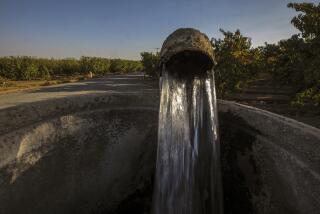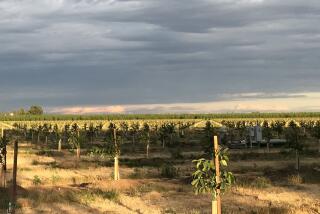Water and the Central Coast’s wine problem
In recent decades, the Central Coast of California has become one of the state’s most important wine-producing regions. But at what cost?
Until recently, most ranchers and farmers in this part of California embraced dry farming practices, raising crops irrigated solely by rain. The crops that were dry farmed, including barley and hay, were then used by the area’s cattle ranches. Water, drawn from an aquifer, was understood by everyone to be a precious shared resource.
Historically, there has been no water district to manage allotments. Residents, ranchers and farmers relied on wells drilled on their property. Everyone understood that water resources were finite and required stringent self-management. Those who chose crops that needed irrigation were also part of the community, and they generally managed their use of water in a responsible way. The San Louis Obispo County Board of Supervisors presided over water issues if they arose.
Today, that centuries-old tradition of small, sustainable cattle ranches and dry farming is dying, and the area’s rolling hills are being planted with vineyards. There are sustainable ways to grow grapes, and many small growers have embraced these techniques.
But increasingly, large corporations that seem indifferent to the long-term effects of aquifer depletion are buying out not only ranches but smaller, locally owned vineyards. The new mega-wineries have acquired huge tracts of land on which they “water mine,” drilling large wells deep into the aquifer and building reservoirs connected to huge piping systems to store and distribute the water pulled from the ground.
The area has never seen water use on this scale, and longtime residents are paying the price. Wells are going dry, and people are having to choose between watering their animals and crops and having water for drinking, cooking and bathing.
In a letter written to county supervisors last month and quoted by a local newspaper, resident Daniella Sapriel described how her well had dried up in June. “The month before, our neighbors to the south went dry,” Sapriel wrote. “We ran a hose over to water their horses. Now they are running a line of hoses to our property to keep our landscaping from dying while we wait for our new well to be completed.”
A close friend of mine has deep cattle-ranching roots in Central California, and I’ve had the good fortune to spend time with his family on their small parcel of heaven, with its almond groves, rolling hillsides and small, carefully tended pastures. I’ve helped my friend with a micro-ranching project, which has taught me a bit about the intricate dance between sustainable practices and animal husbandry, and how they must be balanced with the needs of people who live in a community. Lately, though, the talk of ranching has focused primarily on the urgency of the water situation.
You can hear the real fear of aquifer collapse in daily conversations among residents. The area between San Miguel and Santa Margarita (known locally as North County) has seen its fortunes rise as it became known for growing high-quality wine grapes. Land has become more valuable, and wine tourists have reinvigorated the local economy.
But the area’s longtime residents have watched skeptically and waited, knowing that water scarcity could sink the new industry. Many now believe the tipping point has been reached and fault the supervisors for not acting sooner and more decisively.
On Tuesday, after urging from the State Water Resources Control Board, county supervisors passed an emergency measure that places a moratorium on new planting of irrigated crops. The board is also considering establishing a water district for the area.
But while the actions could help in the future, they do little to solve the existing crisis. And the measure makes an exception for projects already in the pipeline, which means the water situation could continue to worsen.
Small landowners, meanwhile, are still struggling to survive. Many have borrowed money to drill wells deeper into the aquifer, and drillers are having trouble keeping up with the demand. As the water dries up, some locals have abandoned their properties. But others are determined to fight.
The overwhelming majority of folks I have met among the area’s ranchers, farmers and residents are quiet and conservative by nature. But lately they are turning into possessed activists, learning everything they can about water rights and the players involved in the current drama. Board of Supervisor meetings, typically sparsely attended, are packed with scared, frustrated and angry residents.
In the next few months, some tough questions will have to be asked and answered. Should long-term residents be compensated for losses caused by newcomers draining the aquifer? Who should have first rights to the scarce water resources? Who should oversee water distribution?
But ultimately, a bigger question must be asked: Is growing grapes an appropriate use of scarce water resources in this region?
Evan Kleiman, a chef and restaurateur, hosts the KCRW show “Good Food.”
More to Read
A cure for the common opinion
Get thought-provoking perspectives with our weekly newsletter.
You may occasionally receive promotional content from the Los Angeles Times.





